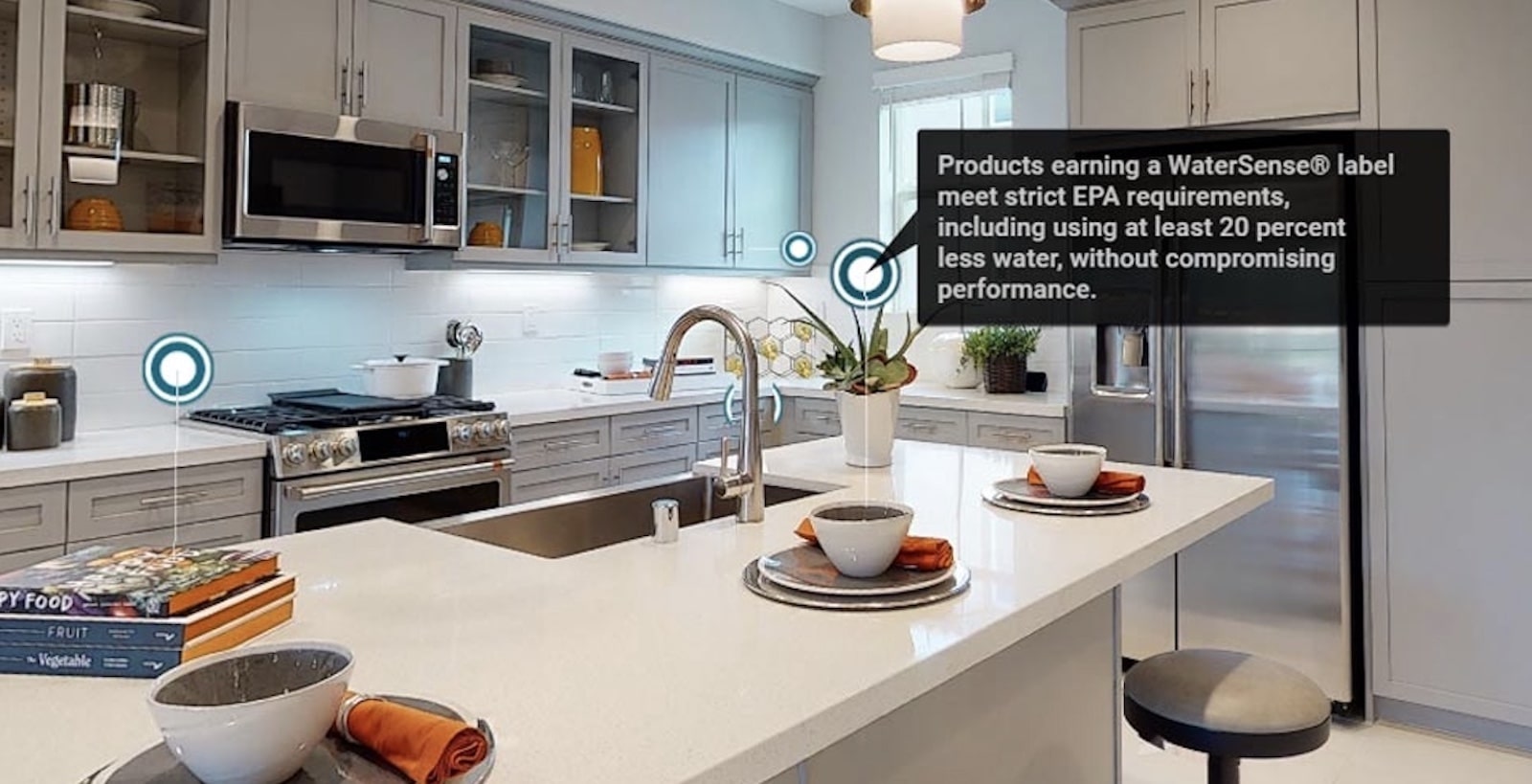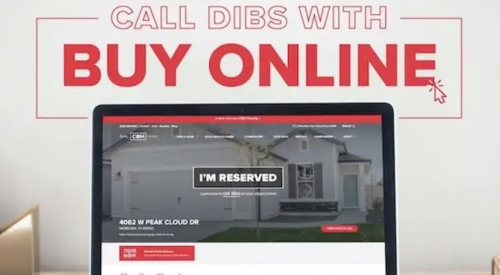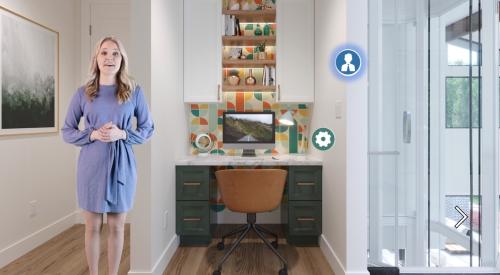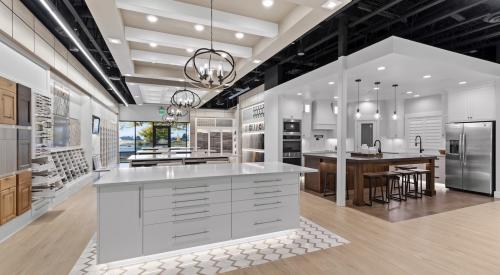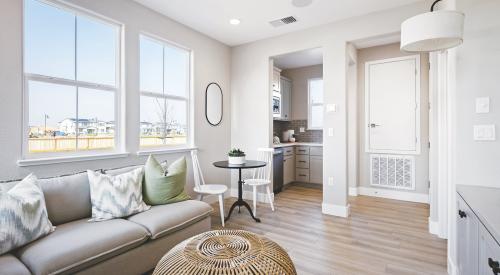After 18 months of the coronavirus pandemic, home builders are emerging from a period fraught with challenges but also opportunities as they explore new ways to market and sell homes. While builders expect in-person visits to new homes to resume as they reopen their model homes and sales centers, they also anticipate that the digital strategies honed during the pandemic will continue to be effective for both them and their homebuyers, and further improve the purchasing experience.
Adoption by Fire: Online Commerce Comes to Home Building
Online commerce had been slow to come to home building, says Tim Costello, chairman and CEO of Builder Homesite, which provides digital services to 1,300 builders, but the pandemic changed that.
Early on, he says, builders “received a very clear, very direct survival crisis message: If you don’t change the way you do business and adopt new [strategies], your sales will go to zero.” A key question Costello asks builders in helping them design their digital platforms is, “Where’s your Buy button?”
Several builders took up the call to action with a sense of sudden urgency … and ideally some advanced prep. “A lot of things we thought for years would be nice to have but maybe got delayed for other initiatives suddenly got moved up to the top,” adds Chris Thornton, VP of digital marketing and technology for Ashton Woods, an Atlanta-based home builder. “Luckily, we had put a lot of thought into these things but not pulled the trigger. The pandemic made us do some of these things we’d been thinking about all along.”
RELATED
- Sales and Marketing Trends: Above and Beyond
- Buy It Now: Self-Service and the Homebuying Experience of the Future
- The Future of the New-Home Design Studio
The company’s initiative included so-called chatbots or artificial intelligence for visitors to chat with a “virtual” person about the basics of a project or floor plan and allowing customers to go online to schedule in-person appointments, choose colors, configurations, and finishes. As a result, buyers are better informed and better equipped to make decisions, and therefore purchases. “For us, it’s all about managing the customer experience,” Thornton says.
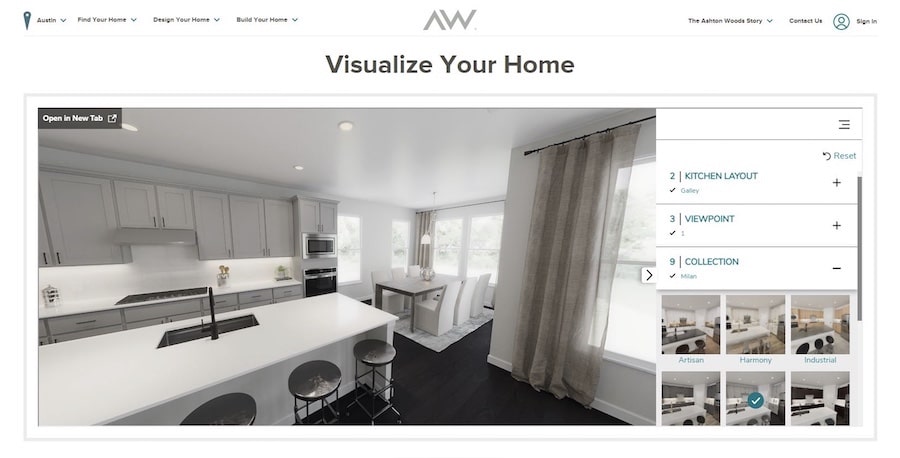
Other strategies include FaceTime or virtual 3D tours with Matterport cameras, and remote entry products and apps that allow prospective buyers to gain access into a model home for an unescorted tour. “That technology has been around for years,” Costello says, adding that while some builders dabbled in these digital solutions, COVID made them a requirement.
And, adds Chelsey Keenan, digital marketing director at Group Two Advertising, “If you don’t have everything buyers expect on the internet, they are going to cross you off the list.”
Digital tools also led to financial savings for home builders by allowing them to incur lower capital and operating costs for staffing and sales offices by adopting digital solutions.
The Advent of the “Buy Now” Button for Home Sales
While fear of catching COVID-19 sharply curtailed in-person home tours, there has been a significant increase in online home shopping and even buying homes online, literally sight unseen. By the end of 2020, according to a survey by real estate brokerage company Redfin, 63% of new-home buyers had made an offer on a house without ever taking an in-person tour.

“They are buying homes at midnight from their sofa,” marvels Ronda Conger, VP of CBH Homes, Idaho’s largest home builder serving red-hot Boise and its surrounding area. “Some have seen [the house in person], some have not. Normally buyers walk away, have to think about it, go home, have dinner, are worried someone else will buy it,” she says. “For them to push that button online has been amazing. The salesperson can get paperwork ready and send it over digitally.”
Says Linda Mamet, chief marketing officer for Tri Pointe Homes, a publicly traded home builder in 10 states and the District of Columbia, “Gone are the days where hundreds would arrive at a model home complex and wander throughout,” she says. “They’ve already been able to do a lot of research online. We are very committed to providing robust digital tools on our site.”
Using BDX software from Builder Homesite, Tri Pointe offers the Life-changing by Design initiative, which enables buyers to choose from a variety of floor plans online, for example.
Another factor is emotional—and practical. “COVID has sparked a housing demand, and I think it’s because people now realize how important home is,” Conger says. “You thought your home was important before, now that’s been taken to a whole new level, if we ever have to go through lockdown again.”
RELATED
“We leaned on technology to support our business and provide a positive customer experience,” said Diane Morrison, chief sales and marketing officer for Mattamy Homes, in Orlando, Fla. “We quickly pivoted to appointments only and using Ring doorbells to control traffic, leveraging the online sales team we had in place, offering online chat, and launched an online appointment scheduling tool.
The company also uses DocuSign, one of several electronic documentation programs that provide the ability to transact on home purchases digitally.
What’s on the horizon? Morrison envisions Mattamy using even more engagement tools and improving its UX (user experience) to assist the customer to fully engage in its communities, homes, and shopping process.
“The key will be maintaining that success going forward,” says Ashton Woods’ Thornton. “If we continue to improve on the experience we are able to provide buyers, beyond the pandemic, that will hopefully help us continue to grow in the future.”
A Boost to Sales Traffic: Real-Time Results
Housing’s quick rebound from initial COVID-induced lockdowns last spring, with record demand, sales, and price increases, was the result of several factors. But builders that initiated or augmented their sales and marketing technology certainly count that effort as a factor.
In addition to its online purchasing option, CBH Homes’ Tour Now service—which allows buyers to enter and tour CBH homes on their own schedule, without an agent, by using a keypad code at the front door—resulted in a 60% increase in sales traffic to its homes, week over week, Conger says.
And it's not just sales, but also savings. Tri Pointe’s Mamet says the evolution of the builder’s digital marketing and home shopping tools, less reliance on outside brokers, and appointment-driven sales approach has enabled its sales and marketing operations to be more efficient, as evidenced by the builder’s 31% increase in orders per sales employee in Q1-2021 compared with a year earlier.
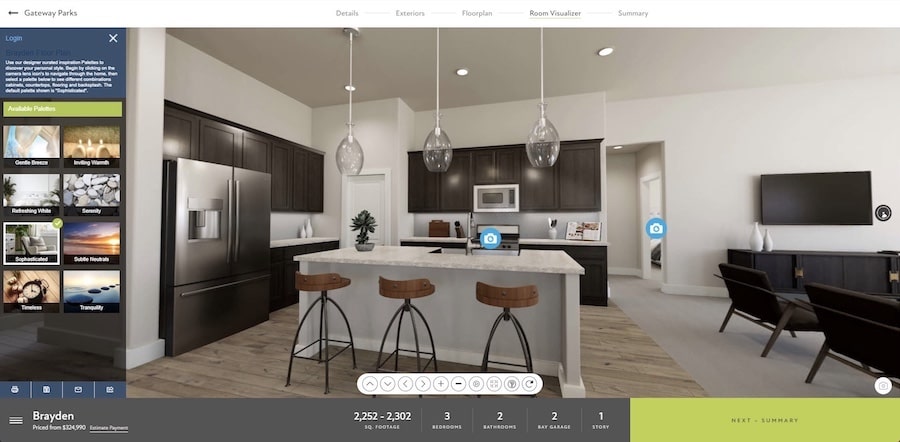
Mamet also credits the builder’s focus on leveraging technology as a key reason why its sales and marketing expenses dropped from 7.2% of home sales revenue to 5.6% in the first quarter of 2021 … and to just 4.5% in the second quarter.
At Ashton Woods, leads derived from the builder’s self-service appointments and chatbot tools converted to sales 45% above average, while users of its online visualizer tools resulted in site visitors remaining on the company’s website 23% longer. “The tools we’ve added have really helped us create some new and improved experiences for our buyers while adding operational efficiency to how we manage the buyer journey,” Thornton says.
Sales and Marketing Trends: Above and Beyond
The pandemic spurred builders to adopt new technologies, but also efforts to protect their buyers and their sales teams from a far different challenge
In addition to offering a range of digital tools to allow prospective buyers to see, tour, and even purchase a new home online, many builder websites also directly address the COVID-19 pandemic to assure customers the company complies with all recommended health safeguards.
Tri Pointe Homes, a publicly traded home builder in 10 states and the District of Columbia, also adds this caveat, warning that any “future results, performance or achievements” could be subject to “the effects of the ongoing COVID-19 pandemic …”
And once buyers were allowed to go back to scheduled in-person visits, the same sort of messages also appeared in sales centers and model homes. At Mattamy Homes, in Orlando, Fla., the builder provided personal protective equipment and outfitted its physical presence with bold signage and other messaging and tools regarding health safety protocols that follow Centers for Disease Control and Prevention guidelines.

“We focused on our team members and our customer experience to clearly communicate ... what to expect upon visiting our communities,” says Diane Morrison, the builder’s chief sales and marketing officer.
The response was overwhelmingly positive from both customers and members of the sales team. “They appreciated that we reacted quickly, effectively, and with careful consideration of the customer experience,” she says. “And we continue to get good feedback.” —Eugene L. Meyer
